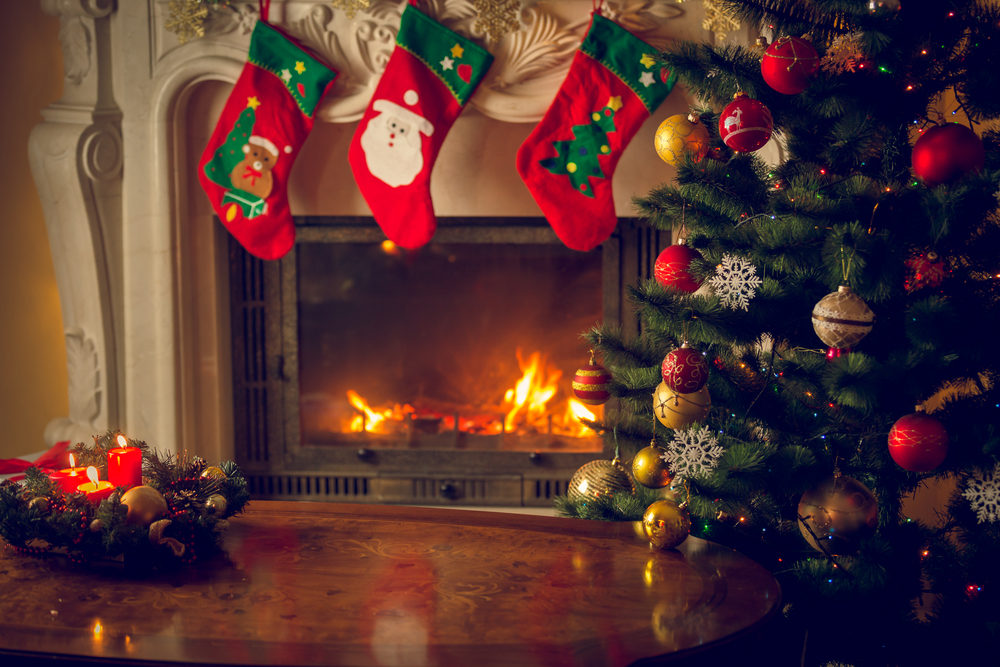
On Christmas Eve last year, a couple in Metuchen, New Jersey, and their four children were celebrating with friends when they received word from neighbors that their house was engulfed in flames. Along with losing the home to the fire, the family’s two dogs were also killed. According to police, the fire was somehow caused by their holiday light display.
It was also a Christmas lights display that destroyed a home in Old Tappan, New Jersey, on Dec. 26, 2018, leaving a mother, a father, and twin toddlers homeless. According to news reports, the family was woken up by “a crackling noise,’’ and they realized flames were coming into the house from the porch.
And in 2015, in Secaucus, New Jersey, this time on Christmas Day, a fire displaced an 87-year-old grandmother, her son and grandson. A cat was also killed in the fire. The woman had been celebrating the holiday and was about to take a nap when she smelled smoke and decided to check on the stove, where she saw flames shooting out. The family had lived in the house for more than six decades.
Whether it is a large family home or a small townhouse, New Jersey residents must stay diligent about fire dangers during the holiday season. There is an increased risk of house fires due to the need for more heat and particular holiday activities like displaying lights, holiday cooking and simply sitting by a roaring fire with loved ones. It takes just one spark to start a fire capable of decimating a home within minutes, and even worse, one capable of killing a human being or beloved pet.
Last year, there were more than 2,000 home fire fatalities nationwide, with more than 40 taking place in New Jersey. During the holiday season, the risk of a fire increases exponentially due to the need for more heat and activities like displaying holiday lights, holiday cooking, and the increased use of candles and fireplaces.
How to Safely Warm Your Home
According to data collected by the National Fire Protection Association (NFPA), heating equipment caused on average 48,000 fires a year between 2014 and 2018, with a major issue being space heaters. More than half of the home heating fire deaths were caused by the equipment being too close to flammable objects. You must keep heating devices away from all flammable materials like curtains, upholstered furniture, clothing or bedding. And, no matter how nice it is to come home to a warm house, it is always important to turn off heating devices if you will not be in the area.
The NFPA also reported a large number of home fires were caused by property owners’ failure to clean equipment properly with two in five home heating equipment fires involving wood-burning or pellet stoves or wood-burning fireplaces. If these are not maintained and cleaned regularly, the build-up of flammable substances, like creosote, can be ignited and cause flames that can easily grow out of control. If a landlord or property manager’s negligence or lack of maintenance caused a fire accident, a New Jersey fire accident attorney could help determine the best legal options for holding them responsible.
While some fire accidents occur due to someone else’s negligence, there are safety tips you can follow when heating your home to protect your family and property.
- For fuel-burning space heaters, always confirm you are using the right kind of fuel specified by the manufacturer.
- When using a fireplace, make sure there is a sturdy screen to stop sparks from flying into the room, and when cleaning the structure, ashes should be cool before putting them in a metal container (and keep the container a safe distance away from your home).
- Have a qualified professional install stationary space heating equipment, water heaters or central heating equipment according to the local codes and manufacturer’s instructions.
- Have heating equipment and chimneys cleaned and inspected every year by a qualified professional.
- Make certain your heater has an oxygen depletion sensor (ODS). ODS sensors are found in units made after 1984 and will turn off the heater if it senses high levels of carbon monoxide.
- If using an electric heater, make certain the extension cord is #14 gauge or larger. Do not use a lightweight cord and run it under the rug.
- Plug heaters directly into wall outlets, never use a household extension cord, and never run any size cord, extension or hard-wired, under a rug where damage can occur unnoticed.
- Make sure the device has a “tip over” switch that turns the heater off if it’s knocked over.
- Have a three-foot kid-free zone around open fires and space heaters.
- Never use your oven to heat your home.
How to Avoid Holiday & Christmas Tree Decorating Fire Hazards
No matter how hectic the days are in December and early January, decorating must be done cautiously. The fact that house fires are an all too common problem during the holidays can not be overstated.
Choose flame-resistant or flame-retardant decorations and be specific about the layout of the display and its placement near heat sources. According to the NFPA, at least two of every five decoration fires happen because items are placed too close to a heat source. Along with that, more than one-third of home decoration fires are started by candles. It is important to keep lit candles away from decorations and any items that can burn.
For many families, the center of the best holiday memory is a tree decorated with beloved ornaments. However, while Christmas tree fires are not common, they are likely to be serious if they occur.
Whether it is a real tree or an artificial one, almost one-third of home Christmas tree fires are caused by electrical problems. Use only appropriate lighting and read all instructions carefully, paying close attention to electrical requirements. Do not overload electrical outlets by linking too many strings of lights together, and never use real candles to light a tree.
As the holidays move forward, real trees dry out, and a dry tree that ignites in flames can engulf a room in a matter of seconds. If you choose to use a live tree, make sure it has fresh, green needles that do not fall off when touched. Shortly after purchasing it, cut two inches from the base of the trunk to allow moisture to soak in (as well as to ensure the tree is flat in the stand). Once the tree is in the stand, keep the water reservoir full to prevent tinder-dryness.
While artificial trees pose less risk due to their vinyl or plastic needles, they are not 100 percent safe. Often these types of trees come “pre-lit” with strings of lights already installed, and the strings could become a safety concern if they spark. Make sure these “pre-lit” trees have strings of lights free from bad wiring. Look over the lights themselves, replacing any that are burned out. When attaching new lights to a string, make sure they are secured.
Stand trees at least three feet away from any heat source (fireplaces, radiators, candles, heat vents or lights), and do not let the tree block an exit in case of an emergency.
Fire Safety Equipment That Needs to Be In Your Home
Even with precautions and a well-thought-out plan in place, accidental house fires are still a common occurrence. You should try to have the following fire safety equipment on hand, so you are better prepared in the event of an accidental fire.
- Smoke alarms: A working smoke alarm in a home decreases the chance of fire death by 55 percent and should be a part of every family’s home fire escape plan. Make sure to check the batteries monthly and replace the alarm itself every ten years.
- Fire extinguishers: Use a portable fire extinguisher when the fire is confined to a small area and is not growing. Ensure everyone has exited the building, the fire department has been called, and the room is not filled with smoke. When using an extinguisher, remember the word PASS: Pull the pin. Hold the extinguisher with the nozzle pointing away from you, and release the locking mechanism. Aim low. Point the extinguisher at the base of the fire. Squeeze the lever slowly and evenly. Sweep the nozzle from side to side. For the home, select a multi-purpose extinguish.
- Carbon monoxide alarms: Often called the invisible killer, carbon monoxide (CO) is created when gasoline, wood, coal, natural gas, propane, oil, and methane, burn incompletely. In the home, heating and cooking equipment that burn fuel are potential sources of carbon monoxide. A small amount of CO can poison a person over a longer period of time or by a large amount of CO over a shorter amount of time.
To prevent carbon monoxide poisoning, you should install carbon monoxide alarms like you would smoke alarms. They should be accessible throughout the house’s interior and in other locations required by applicable laws, codes or standards. And, for the best protection, interconnect all CO alarms so when one sounds, they all sound.
Many times, carbon monoxide poisoning occurs after extreme weather events. If you happen to lose power, you should never use your oven to heat your home, and if using a generator, it needs to be in a well-ventilated location outdoors away from windows, doors and vent openings.
Unfortunately, even if you follow all of these fire safety tips, fire accidents still happen. The recovery process can be stressful and expensive. If you or someone you know is a fire accident victim, and a defective product or someone else’s negligence played a part, contacting an attorney can help with the aftermath. A knowledgeable New Jersey fire accident attorney can discuss possible legal options and prepare you for what could be a lengthy legal process. New Jersey fire accident victims can contact D’Arcy Johnson Day toll-free at (866) 327-2952 or online for a free legal consultation.

From sexual abuse matters to personal injury and workers compensation, Jessica brings a wealth of experience to her practice at D’Arcy Johnson Day. Her fluency in both English and Spanish enables her to help so many members of the community, as she focuses on accident and personal injury cases, work injuries, medical malpractice, immigration, criminal law, and municipal court proceedings among other areas of practice.










Comments for this article are closed.